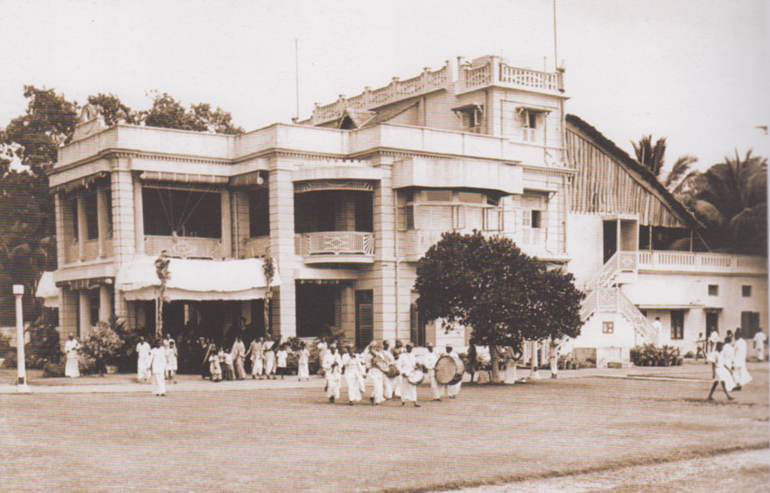
From India House to hangars.
Chennai should feel a sense of pride that the Madras Institute of Technology (MIT) was established in 1949, a little earlier than the first IIT set up in West Bengal’s Kharagpur in May 1950, and a decade before IIT Madras in 1959. MIT, established by an industrialist, Chinnaswamy Rajam, opened in July 1949 with 96 students from “Kashmir to Kanyakumari” who would specialise in automobile engineering, aeronautical engineering, electronics engineering and instrumentation technology.
The campus had readymade hangars, as the 27 acres of land in Chromepet on which MIT was set up, had been used as an airfield during World War II. The hangars became workshops for the students. The seed capital for buying the land on which MIT now functions was Rs. 5 lakh that Rajam mobilised by selling India House, his handsome bungalow across the road from the Music Academy.
The story of the founder and founding of the institution’s growth are only too briefly told in a small coffee table-type book, A Visionary’s Reach, which was released at a recent function.
To help him set up the College, Rajam formed a core committee which comprised lawyer and philanthropist M. Subbaraya Iyer, who was also instrumental in founding Vivekananda College and Vidya Mandir; M.K. Ranganthan, the first Director of MIT (1949-54); K. Srinivasan, Editor, The Hindu; C.R. Srinivasan, Editor, Swadesamitran; philosopher and statesman S. Radhakrishnan; and retired PWD engineer L. Venkatakrishna Iyer.
Demonstrating that the institute enjoyed plenty of goodwill, students of the first batch, on the last day of the first term exam, went to Coimbatore to train in the G.D. Naidu Industrial Training Centre. G.D. Naidu also donated the college its first clock tower. When the first year classes in Applied Mathematics, Physics and Chemistry began, till MIT’s laboratories were adequately equipped, Physics and Chemistry practicals were conducted in the Madras Christian College campus in Tambaram between 6 and 9 a.m. according to the schedule.
Dr. Prema Srinivasan, who put together the book, is a grand-daughter of C. Rajam. She writes that the idea of writing a biography came when MIT students and professors were searching for photographs of Rajam and details of his activities from his collection for the MIT Museum which was inaugurated in 2011. Four alumni of MIT, Vijayalakshmi, Karthika Kumarasamy, Sameer Nizamuddin and Balamurugan Ponnusamy, helped compile the book.
Among the many pictures in the book is one of the sixth batch of Aeronautics students (1954-57) with former President of India, Dr. A.P.J. Abdul Kalam sitting with his classmates and Professors Repen- thin, Sponder and Pandalai.
Dr. Kalam, recalling the life of Rajam, writes: “He (Rajam) sold his bungalow…What for? Shri Rajam found when he was starting an industry, he had to install a lot of equipment. After installation, some had to be repaired. Every time Shri Rajam found he had to invite foreign technologists and technicians for setting right the equipment either in steel rolling mills, power stations or electrical mill companies. Rajam felt that Indian engineers could design and build equipment and plants and also maintain them. He visualised that the design, development, maintenance and operation of engineering systems should be integrated in the technological field. That is how he worked towards founding MIT. This process has become an integrated part of education at MIT. In addition, the visionary Rajam also foresaw the requirements of the Indian Defence Services. He wanted to see the Defence Services employ engineers and scientists. This integrated vision gave birth to the MIT we see today.”
Nehru’s words in his address at the first Convocation (October 9, 1952) drew attention to the initiatives taken by the founder and his associates: “Anyhow, the most impressive fact of this young and growing institute is that you, having started from small beginnings, are making good progress more with your own efforts, than what you could have if you had an easier time, having all things put before you.” Part of the progress was the number of expatriate academics Rajam recruited for MIT.
Well after its silver jubilee celebrations in 1975, MIT and three sister colleges, the College of Engineering, Alagappa College of Technology and the School of Architecture and Planning, all in Guindy, merged to form the Perarignar Anna University of Technology, now the unitary Anna University. MIT has its own website (http://www.mitindia.edu/) with its original insignia ‘In the service of India’ emblazoned alongside Anna University’s.
Apart from his industrial and educational interests, Rajam was a music aficionado. It was he who introduced the legendary singer M.S. Subbulakshmi to Madras by sponsoring a lecture and vocal-veena-violin concert on December 28, 1933. MS was accompanied by her mother Shanmuga Vadivoo on the veena.
Of Rajam’s six children, three sons and three daughters, C.R. Ramaswamy gave up a career in the Indian Army to help his father in the family business when his elder brother C.R. Vishwanthan passed away suddenly. It was Ramaswamy who took on Rajam’s mantle after his death in July 1955.
One of the alumni, Dr K. B. Chandrasekhar, who passed his DMIT (Electronics) in 1983, helped to set up the AU-KBC research centre in his alma mater in 1999 with generous funding and mentoring support. Other notable alumni are Prof. K.V. Narayanan, who went on to work at MIT for 37 years, and T.A.S. Balagopal, formerly Director (Exports), Tata Motors, and Chairman, Engineering Export Promotion Council. Maya and Lakshmi Menon (1964) were the first women graduates of the Institute.
– T. K. Srinivasa Chari
|

